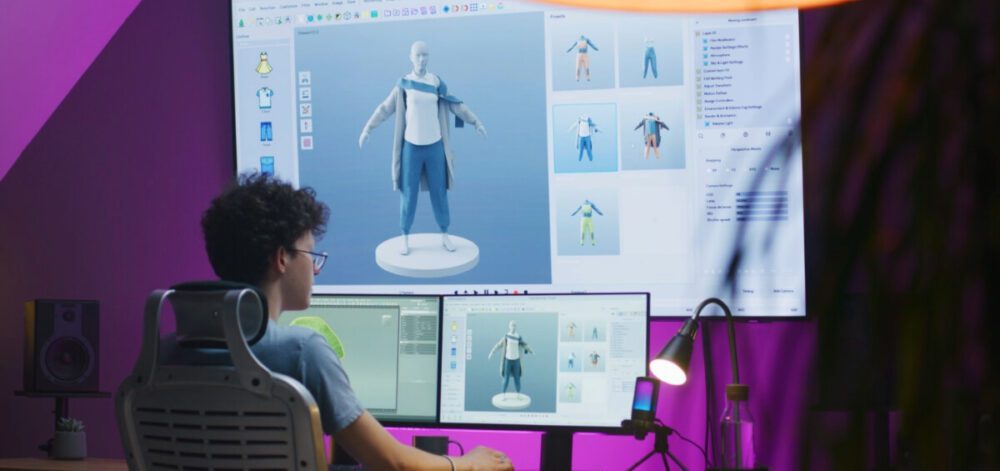How SR&ED Can Fuel Innovation in Video Game Creation and Production
Video game creation thrives on innovation, pushing the boundaries of technology to deliver more immersive and complex experiences for players. However, the process of creating cutting-edge games often involves significant technological uncertainties that can slow development and require experimental solutions. Fortunately, the Canadian Scientific Research and Experimental Development (SR&ED) program offers valuable tax credits to companies engaging in research and development activities to overcome these challenges. By documenting these efforts, video game developers can access financial support that fuels continued innovation.
Technological Uncertainties in Video Game Production
Video game creation involves solving numerous technological challenges. Many of these challenges can qualify for SR&ED tax credits. Below are key areas where technological uncertainties often arise:
Graphics Rendering Optimization
Technological Uncertainty: Developing advanced graphics rendering techniques for realistic visuals or optimizing real-time rendering across various platforms involves overcoming significant uncertainties. Game developers must experiment with new algorithms, shader techniques, and compression methods. This helps to strike a balance between graphical fidelity and performance.
SR&ED Aspect: Experimenting with rendering algorithms and methods to achieve optimal graphics quality and performance makes this process eligible for SR&ED credits. This is especially true when exploring new techniques and optimizing for different hardware.
Artificial Intelligence (AI) and Machine Learning (ML) Integration
Technological Uncertainty: Implementing AI and machine learning models to drive non-player character (NPC) behaviors, procedural content generation, or adaptive difficulty systems introduces uncertainties. Developers must test various AI algorithms to determine their effectiveness in enhancing the player experience.
SR&ED Aspect: Designing and refining AI/ML systems to improve game functionality is a prime example of SR&ED-eligible activity. Especially when faced with uncertainty about which algorithms will best serve game mechanics.
Virtual Reality (VR) and Augmented Reality (AR) Development
Technological Uncertainty: Creating immersive virtual reality (VR) and augmented reality (AR) experiences comes with unique challenges. This includes addressing motion sickness, developing natural user interactions, and dealing with hardware limitations.
SR&ED Aspect: Experimenting with different interaction models, optimizing performance, and solving motion sickness issues through systematic testing qualifies as SR&ED activity. In particular, as developers push the boundaries of VR/AR technology.
Networked Multiplayer Systems
Technological Uncertainty: Building a robust and scalable multiplayer system is a complex challenge. This is particularly true when it comes to ensuring low latency, maintaining synchronization, and handling large numbers of players in real time.
SR&ED Aspect: Researching and developing new networking protocols and optimizing systems for different network conditions and platform capabilities is often necessary, making it eligible for SR&ED tax credits.
Dynamic World Creation
Technological Uncertainty: Creating dynamically generated game worlds or environments that evolve based on player actions involves significant technological uncertainty. Developers must experiment with procedural generation algorithms and dynamic world-changing events to provide a seamless player experience.
SR&ED Aspect: Researching and testing new methods for dynamic world generation, as well as refining systems to achieve desired gameplay results, is a key area where SR&ED credits can support video game developers.
Cross-Platform Development
Technological Uncertainty: Ensuring that a game performs consistently across multiple platforms with varying hardware specifications is a common technological hurdle in game development. Developers face uncertainties in optimizing the code for different devices while maintaining the same gameplay experience.
SR&ED Aspect: Researching and developing cross-platform tools, addressing compatibility challenges, and optimizing for a range of hardware configurations are all SR&ED-eligible activities.
Immersive Sound Design
Technological Uncertainty: Incorporating advanced spatial audio techniques to create an immersive sound experience can be challenging. This can occur when optimizing sound design for different audio hardware setups. Developers must experiment with spatialization methods and algorithms to achieve the desired sound quality.
SR&ED Aspect: Experimenting with sound algorithms and testing spatial audio techniques qualifies for SR&ED credits. In particular, when the goal is to enhance the overall gaming experience through innovative sound design.
Qualifying for SR&ED: Key Criteria for Game Developers
To qualify for SR&ED tax credits, video game developers must demonstrate that their R&D activities address specific technological uncertainties. The key criteria include:
- Technological Advancement: The R&D effort must lead to a technological advancement. This can include developing a new game engine, enhancing AI/ML systems, or improving rendering techniques.
- Content of Information: Developers must show that their project involved a knowledge gap and that the solution required experimentation and innovation.
- Systematic Investigation: The R&D process should involve a systematic approach, with experimentation and testing used to resolve technological challenges.
Benefits of SR&ED for Video Game Creation
The SR&ED program offers substantial financial incentives, including tax credits and refunds, which help offset the high costs of video game development. For video game developers pushing the boundaries of technology, these incentives provide essential funding to continue innovating and delivering groundbreaking gaming experiences. Additionally, SR&ED encourages further investment in R&D, helping game studios stay competitive in a rapidly evolving industry.
The Importance of Expert SR&ED Guidance
Video game developers tackling complex technological challenges can greatly benefit from the SR&ED program. However, navigating the complexities of SR&ED claims requires expert guidance to ensure that all eligible activities are identified and documented. Partnering with an experienced SR&ED consultant can help developers maximize their claims, enabling them to focus on what they do best—creating incredible games.
Contact Ayming Canada
If your video game creation project involves overcoming technological uncertainties, you may be eligible for SR&ED tax credits. At Ayming Canada, we specialize in helping innovative companies navigate the complexities of the SR&ED program. Our expert consultants will ensure that your R&D efforts are properly documented and that your SR&ED claims are maximized. Contact us today to learn more about how we can support your video game development through SR&ED funding.
Contact us today!
One of our experts will be in touch shortly.













No Comments